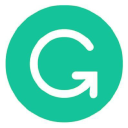On Building A Network Of 500+ On-Demand Spaces
Hello! Who are you and what business did you start?
My name is Shyam Sundar Nagarajan and I am the Founder & CEO of an India- based On-demand ‘Space’ brand GoFloaters. My CoFounder & COO is Srivatsan Padmanabhan.
We are first of its kind on-demand work, meeting and event space startup in India that helps thousands of early-stage start-ups, freelancers, SMB's, independent professionals, solopreneurs, digital nomads, remote workers, media professionals, YouTubers, mompreneurs, sales and enterprise teams to find affordable plug-and-play work, meeting & event spaces though GoFloaters app – Android & iOS.
Users get to choose the spaces through the app at hourly, daily or monthly pay-as-you-use model without having to worry about contracts, minimum commitments, security deposits, or retainer fees.
2019 has been an incredible year for us - with 5x growth on our customer base, 4x revenue growth and 10x growth on space partnerships.

Download the report and join our email newsletter packed with business ideas and money-making opportunities, backed by real-life case studies.

Download the report and join our email newsletter packed with business ideas and money-making opportunities, backed by real-life case studies.

Download the report and join our email newsletter packed with business ideas and money-making opportunities, backed by real-life case studies.

Download the report and join our email newsletter packed with business ideas and money-making opportunities, backed by real-life case studies.

Download the report and join our email newsletter packed with business ideas and money-making opportunities, backed by real-life case studies.

Download the report and join our email newsletter packed with business ideas and money-making opportunities, backed by real-life case studies.

Download the report and join our email newsletter packed with business ideas and money-making opportunities, backed by real-life case studies.

Download the report and join our email newsletter packed with business ideas and money-making opportunities, backed by real-life case studies.





































